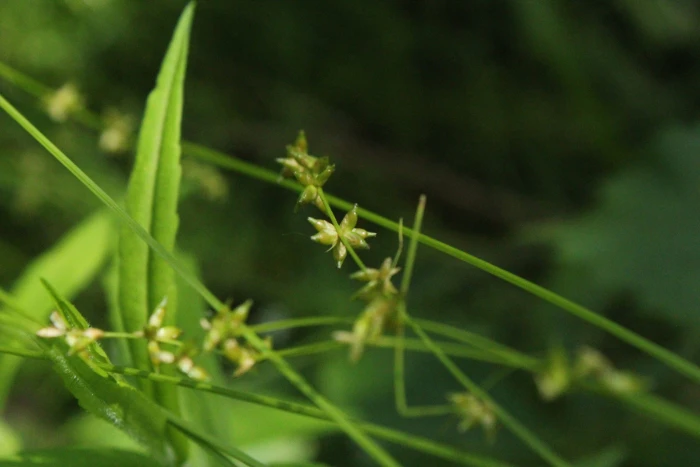Eastern Star Sedge
(Carex radiata)
Eastern Star Sedge (Carex radiata)
/
/

Quinten Wiegersma
CC BY 4.0
Image By:
Quinten Wiegersma
Recorded By:
Copyright:
CC BY 4.0
Copyright Notice:
Photo by: Quinten Wiegersma | License Type: CC BY 4.0 | License URL: http://creativecommons.org/licenses/by/4.0/ | Rights Holder: Quinten Wiegersma | Publisher: iNaturalist | Date Created: 2019-06-25T15:21:56-07:00 |














































Estimated Native Range
Climate Requirements for Morristown, Tennessee
| This Plant | Your Site | Plant Suitability for Your Location | ||
|---|---|---|---|---|
| • Precipitation | 18" - 77" | 47" | Aquatic | Aquatic |
| • High Temp. | 64°F - 93°F | 87°F | Your summer temperatures are normal for this plant. | Excellent |
| • Low Temp. | -18°F - 36°F | 25°F | Your winter temperatures are normal for this plant | Excellent |
This plant may not grow well at your location - your precipitation is too high.
Summary
Carex radiata, commonly known as Eastern Star Sedge, is a deciduous perennial sedge. It is native to moist, deciduous woodlands, and shady, wet meadows in the Eastern and Central United States, as well as parts of Canada. This sedge typically grows to a height of 2-3 feet (0.6-0.9 meters) and has a clumping habit with a similar width of about 2 feet (0.6 meters). The plant features fine-textured, grass-like leaves and inconspicuous greenish-brown flowers that appear in late spring to early summer. While the flowers are not particularly showy, the foliage provides a lush groundcover throughout the growing season.
Eastern Star Sedge is valued for its ability to thrive in shady conditions and its utility as a ground cover in moist, woodland gardens. It is often used in naturalized areas, rain gardens, and as a filler in shaded borders. This sedge prefers consistently moist to wet soils and part shade to full shade conditions. It is relatively low maintenance, but may require additional water during dry periods. While generally pest-free, it can suffer from rot if the soil is too dry. Eastern Star Sedge is not known for being invasive and typically does not present any significant problems when grown in appropriate conditions.CC BY-SA 4.0
Eastern Star Sedge is valued for its ability to thrive in shady conditions and its utility as a ground cover in moist, woodland gardens. It is often used in naturalized areas, rain gardens, and as a filler in shaded borders. This sedge prefers consistently moist to wet soils and part shade to full shade conditions. It is relatively low maintenance, but may require additional water during dry periods. While generally pest-free, it can suffer from rot if the soil is too dry. Eastern Star Sedge is not known for being invasive and typically does not present any significant problems when grown in appropriate conditions.CC BY-SA 4.0
Plant Description
- Plant Type: Grass, Grass
- Height: 2-2.5 feet
- Width: 1.5-2 feet
- Growth Rate: Moderate
- Flower Color: N/A
- Flowering Season: Spring
- Leaf Retention: Evergreen
Growth Requirements
- Sun: Part Shade
- Water: Medium, High
- Drainage: Slow, Medium
Common Uses
Bird Garden, Deer Resistant, Erosion Control, Groundcover, Low Maintenance
Natural Habitat
Moist, deciduous woodlands and shady, wet meadows
Other Names
Common Names: Radiate Sedge, Stellate Sedge, Straight-Styled Wood Sedge, Carex Rayonnant
Scientific Names: Carex radiata, Carex rosea var. radiata, Carex rosea var. minor, Carex echinata var. radiata, Carex radiata var. staminata, Carex radiata var. staminea, Carex stellulata var. radiata, Carex sylvicola
GBIF Accepted Name: Carex radiata (Wahlenb.) Small